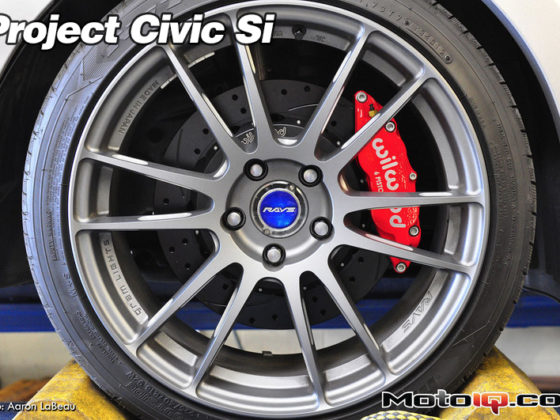,
Fact #2: In 2008, the Nitro race distance changed from 1320 feet (1/4 mile) to 1000 feet for safety, following Scott Kalitta's fatal crash in Englishtown, NJ. While they were approaching the 340 mph at the quarter mark back then, today they're still seeing up to 330 mph at the 1000 ft mark, but with an extra football field of braking distance.
| ||
ARP supplies DSR Racing with its own designated set of rod bolts. We used ARP on Project Supra's engine build up as well. |
 |
A look at the 90-degree V-angle block, which is machined from a forged chunk of aluminum. It has no coolant passages, giving it added strength. Underneath is an oil pan with 2.5 gallons of 70 weight racing oil. |
 |
Look past the ductile iron liners pressed inside the 4.8-in bores and you see the billet steel crankshaft. This crank will survive 8-10 runs before needing replacement, according to Mason. While the rod bearings and heavily loaded lower main bearings get replaced after each pass, the upper main bearings stay with the crank. I'm not sure whether to be more impressed with the crank's ability to withstand 30 seconds of wide-open throttle, or the engine torque's ability to waste a crank in 30 seconds. |
 |
While I'm not allowed to show you the combustion chambers in the head, by looking at this picture you'll notice two spark plugs and two red fuel jets per cylinder. While hemispherically placed, the plugs are positioned slightly closer to the intake valves (bottom), giving them a significant cooling effect by the intake charge. The titanium intake valves measure 2.45-in while the exhaust valves are 1.925-in in diameter, and made of Inconel. The exhaust valves are considerably smaller just so that they can open under all that pressure. If they don't, you'll see why the blower is always strapped to the motor! |






4 comments
This is a fascinating article. Is the whole story published anywhere. If so, where can I get it.
Thank you
Thanks for the kind words, Charlie! I had gobs of fun doing it. Assuming you have looked through all nine pages published here, this is the only place that I know of. Let us know what you think of part two, which is linked here as well!
I’ve stood next to “Big Daddy” Don Garlits when his crew chief puffed on his cigar and before he tossed into the “bleach” he poured around the slicks, told me to take cover.
Before anyone had time to react the night sky lit up from his infamous fire burnout. So cool!
thanx you ı am Ayhan From Turkey 😉
While I’m not allowed to show you the combustion chambers in the head, (https://motoiq.com/nerds-eye-view-inside-10000-horsepower/7/) 😀